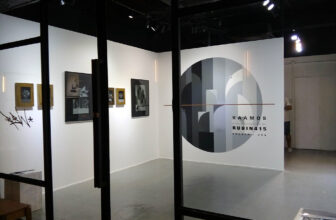
What is Contemporary Art Investment and How to Get Started as a Beginner
Investing in contemporary art has gained significant traction over the past few decades. As a blend of aesthetic appreciation and financial potential, art investment attracts individuals who want to diversify their portfolios while enjoying cultural and creative enrichment. But what exactly is contemporary art investment, and how can a beginner start their journey in this fascinating field? This comprehensive guide will explore the concept, benefits, challenges, and practical steps for investing in contemporary art.
Understanding Contemporary Art Investment
Contemporary art refers to artworks created by living or recently deceased artists, typically from the mid-20th century to the present day. This category encompasses a diverse range of styles, media, and approaches, reflecting the complexities of modern society. Unlike traditional investments such as stocks or real estate, contemporary art offers intangible benefits alongside its potential for financial return.
Art investment involves purchasing artworks with the expectation that their value will appreciate over time. This value can be influenced by factors such as the artist’s reputation, market demand, provenance, and the cultural significance of the work. Contemporary art investment often appeals to individuals who appreciate creativity and are willing to take on some risk for potentially high rewards.
Why Invest in Contemporary Art?
Before diving into the mechanics of art investment, it’s essential to understand why contemporary art is an attractive asset class. Here are some key benefits:
- Portfolio Diversification: Contemporary art can serve as an alternative investment, reducing overall portfolio risk. It often has a low correlation with traditional financial markets, making it a valuable asset during periods of economic instability.
- Potential for High Returns: Iconic works by emerging or established artists can experience exponential value growth. A well-chosen piece of art can yield significant returns over time.
- Cultural and Aesthetic Value: Unlike stocks or bonds, art provides emotional satisfaction and cultural enrichment. Owning a piece of contemporary art allows investors to enjoy the beauty and meaning behind the work.
- Tangible Asset: Art is a physical asset that cannot be easily replicated or devalued by digital disruptions. This makes it a resilient and unique investment vehicle.
- Social Status and Networking: Investing in contemporary art can elevate one’s social status and open doors to exclusive events, galleries, and networks within the art world.
Challenges of Contemporary Art Investment
While the potential benefits are compelling, investing in contemporary art comes with its own set of challenges:
- Market Volatility: The art market can be unpredictable, with prices influenced by trends, economic conditions, and the subjective nature of art valuation.
- High Entry Costs: Quality artworks often come with hefty price tags, making it challenging for beginners with limited budgets to enter the market.
- Illiquidity: Selling art can be time-consuming and dependent on finding the right buyer. Unlike stocks, art cannot be quickly liquidated.
- Storage and Maintenance: Art requires proper care, storage, and insurance, adding to the overall investment cost.
- Risk of Forgeries: The prevalence of fake or misattributed artworks poses a risk to investors. Proper due diligence is crucial to avoid falling victim to fraud.
How to Get Started with Contemporary Art Investment as a Beginner
If you’re new to contemporary art investment, the prospect may seem daunting. However, with the right approach and knowledge, you can navigate this exciting market effectively. Here’s a step-by-step guide:
1. Educate Yourself About Contemporary Art
Understanding the art market and contemporary art is the foundation of successful investment. Take the time to:
- Visit Galleries and Museums: Explore exhibitions and familiarize yourself with different styles, artists, and mediums.
- Read Art Publications: Subscribe to magazines, blogs, and journals focused on contemporary art, such as Artforum or Artnet News.
- Attend Art Fairs and Auctions: Events like Art Basel or Sotheby’s auctions provide insight into current market trends and pricing.
- Take Courses: Enroll in online or in-person courses on art history, market dynamics, or investment strategies.
2. Set a Budget
Art investment doesn’t require millions of dollars, but it’s essential to establish a budget that aligns with your financial goals and risk tolerance. Consider:
- Initial Purchase Cost: Determine how much you’re willing to spend on your first piece.
- Additional Expenses: Factor in costs for framing, transportation, insurance, and storage.
3. Research Artists and Trends
Identifying promising artists is a critical skill in art investment. To do this:
- Study Emerging Artists: Look for artists gaining recognition in galleries, competitions, or publications.
- Understand Market Trends: Research which styles, themes, or movements are currently in demand.
- Evaluate the Artist’s Career: Assess factors such as their exhibition history, critical reviews, and representation by reputable galleries.
4. Start Small
For beginners, starting with affordable artworks or editions is a prudent approach. Consider:
- Prints and Multiples: Limited-edition prints offer an entry point at a lower cost while still holding value.
- Emerging Artists: Works by lesser-known artists are often more affordable and have growth potential.
5. Build Relationships in the Art World
Networking is invaluable for art investors. Build relationships with:
- Gallery Owners: They can provide guidance on artists and market trends.
- Collectors: Joining collector groups or forums allows you to learn from experienced investors.
- Art Advisors: Professionals can offer tailored advice and help you navigate the market.
6. Verify Authenticity and Provenance
Before purchasing any artwork, ensure it is authentic and has a clear history. Request documentation such as:
- Certificates of Authenticity
- Provenance Records
- Condition Reports
7. Diversify Your Collection
Just as with financial investments, diversification reduces risk. Collect artworks across different:
- Artists
- Mediums (painting, sculpture, photography, etc.)
- Geographical Regions
8. Consider Art Funds and Online Platforms
For those hesitant to purchase physical art, alternative investment options include:
- Art Funds: Pool your money with other investors to invest in high-value artworks managed by professionals.
- Online Art Platforms: Platforms like Artsy or Saatchi Art offer accessible ways to buy and sell contemporary art.
9. Focus on Long-Term Value
Art investment requires patience. Avoid chasing short-term trends and focus on works with lasting cultural and market significance. Be prepared to hold onto your collection for several years to maximize returns.
10. Seek Professional Guidance
If you’re uncertain about navigating the art market, consider hiring an art advisor or consultant. These professionals can help you identify opportunities, negotiate purchases, and build a strategic collection.
Contemporary art investment is a dynamic and rewarding venture that combines financial potential with cultural enrichment. While the market can be complex and challenging, beginners can succeed by educating themselves, setting realistic goals, and adopting a thoughtful approach. Start small, seek guidance from experts, and immerse yourself in the art world to build a collection that is both personally fulfilling and financially promising. With time and effort, you can turn your passion for contemporary art into a profitable and meaningful investment.





